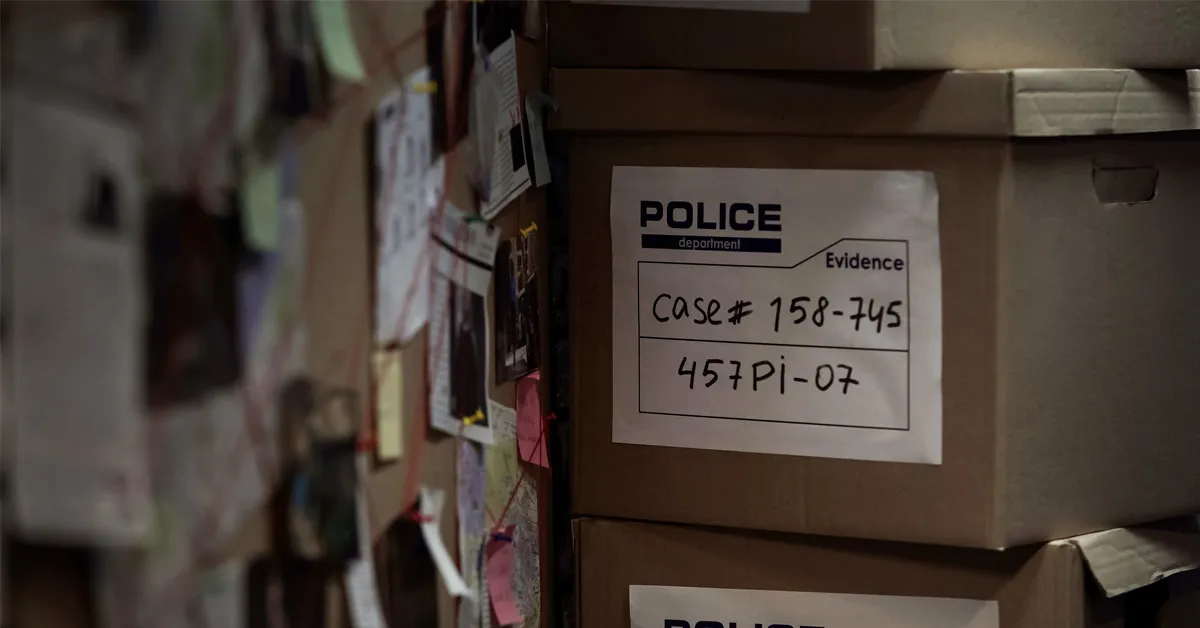Law enforcement faces more challenges than ever before when it comes to managing, tracking, and clearing cases. In this post, we examine seven underlying factors that can slow down law enforcement investigations – and discuss what can be done to make improvements.
From major cases to use of force and internal affairs to intelligence, investigative units are stretched thin. While technology has opened the door for streamlined case management and improved collaboration, there’s no simple band-aid to apply for a quick solution.
To manage cases effectively, agencies must ask themselves important questions in seven different arenas. In this blog, we discuss what those questions are, and how adopting the right case management technology can help.
#1. Case Load
Important questions to ask yourself: What’s the current caseload of your agency’s investigators? How many cases can a single investigator reasonably expect to investigate and clear?
These are the most important questions to ask when evaluating the productivity and efficiency of your agency’s investigative units. If realistic performance expectations are not understood– or if there’s a lack of a balanced caseload – then investigators can become overloaded and, as a result, less effective.
Think of it this way: If an investigator is lightly tasked and has three solvable cases, then the investigator is very likely to clear those cases successfully. But suppose the investigator is overworked and has the same three cases plus seven additional ones. In that case, none of them may be cleared, not even the solvable ones, because the investigator is too thin. This is too often the reality and sometimes agency leadership may not be fully aware of the problem or have the data available to help solve it.
According to the International Chiefs of Police (IACP), agencies across the country are facing a crisis in law enforcement related to recruiting, retention, and retirement. As a result, many investigative units are understaffed.
Also, it’s important to remember that new investigators aren’t simply hired; they are often seasoned officers trained and mentored to work in specialized investigative units. So, the solution isn’t as simple as hiring more investigators. It’s more about maximizing the efficiency of the investigators who already work at your agency and providing the tools and technology to help them perform effectively.
#2. Case Screening & Intake
Important question to ask yourself: What’s your agency’s policy on initiating investigations?
Your case screening and intake policies also impact the caseload and overall speed of investigations. For example, let’s say there’s a robbery, but there’s no video footage, no suspect, no license plate, no witnesses, no forensics – nothing to go on. Should you even open an investigation? The odds of a case like this being cleared are slim, unless additional evidence arises.
Some agencies open a case on all major crimes without considering the potential for solvability. This process bogs down investigators with frustrating cases that can’t be cleared and takes their attention away from the cases that can. In the end, this may be a disservice to both the investigator and the community.
A more proactive approach is to adopt technology that allows screening cases before launching a full investigation. This can effectively limit the workload to cases that have at least some chance of being cleared while ensuring resources are utilized to best serve everyone.
Screening cases requires a well-defined policy. Note that this process isn’t acceptable for matters like homicide, which are worked until solved no matter how long it takes. But other crimes, such as burglaries, robberies, or larcenies, can be screened for solvability. If they score too low, they are administratively closed. A case management system can help document the underlying rationale and help agencies communicate this to the victim, along with an understanding that the case will be re-screened if new leads or evidence develops.
#3. Cross-Unit Collaboration
Important question to ask yourself: How often does your investigative team talk about active investigations with other units?
Bringing cases to a successful conclusion depends on cross-unit collaboration within your agency.
Law enforcement’s ultimate goal is to clear a case and prevent an individual from committing another crime. To accomplish this goal, you need help from other people in your organization. Agencies break down when departments, such as the investigative team and intelligence unit, for example, don’t communicate with each other.
For example, investigative units managing homicide cases and intelligence units managing gang intelligence often utilize separate and siloed applications to track their casework, preventing information sharing and ultimately slowing investigative progress. Agencies that face these issues can improve their investigations by adopting an enterprise-wide case management solution that allows collaboration between units while providing data security where it’s appropriate.
#4. Community Involvement
Important question to ask yourself: Are you including the community in the public safety conversation?
According to the IACP, “No single factor has been more crucial to reducing crime levels than the partnership between law enforcement agencies and the communities they serve.”
Investigations take time. And citizens can help speed up the process. Interacting with the community is critical – the one you’ve dedicated your life to protecting. And not just to get their help but to understand what they need you to focus on.
Managing the police-community relationship is a delicate, nationwide struggle. Agencies that haven’t prioritized this need to start. To do this, communication and transparency are key.
The best way to reach your community is with a dedicated, central resource that citizens and police officers can use to share information. Most agencies have a tip line, but when it’s not integrated into a case management system where it can be assigned and tracked, those tips can fall through the cracks.
#5. Checklist of Investigation Process
Important question to ask yourself: Are you following the right investigation process?
Every investigator aims to do anything and everything they can to solve a case. But sometimes, and especially if the investigator is overloaded, certain steps in an investigation are overlooked or skipped. But even mundane tasks, like distributing wanted flyers or double-checking a specific computer application, can uncover a new lead.
While no investigation is the same, cases still need structure. Investigations need to be carried out in a repeatable, consistent manner. There’s a baseline of tasks that must be done for different types of investigations. Not everything will pertain to that particular case, but you wouldn’t know if you didn’t check it.
Detectives often carry a physical checklist to check their process in the field. Some even take the checklist concept a step further by integrating it with case management software. Integrating this into your process is the only way to ensure that a methodical investigation is carried out for each matter being investigated.
Staying on track with the correct flow of an investigation will ensure that the case moves forward. Skipping even the smallest, seemingly inconsistent step will cause delays or prevent an otherwise solvable case from being cleared.
#6. Case Review
Important question to ask yourself: Are supervisors strategically reviewing case progress?
Many agencies have a policy that dictates supervisors should review cases at certain checkpoints during the process. However, case review is often treated as an administrative burden rather than a strategic opportunity.
The more substantial the review, the more likely it is to reveal something overlooked. This should be a continuous, deliberate process throughout the investigation, and it should be properly documented.
During case review, supervisors should create tasks for the investigative team, rate the investigation’s progress, and document their recommendations for an ongoing investigative plan.
This process is designed for the supervisor to take ownership and responsibility for the fate of the investigations their unit conducts. A well-designed case management system will assist supervisors in following up and reviewing cases in a timely manner.
#7. Investigative Lead Management
Conclusion
Important question to ask yourself: Are your investigators efficiently tracking, managing, and following up on leads?
As we discussed earlier, investigative progress can often stagnate because many under-resourced agencies struggle with managing a high volume of leads. Fortunately, CrimeTracer and CaseBuilder can work in tandem to solve this challenge.
CrimeTracer is a powerful law enforcement search engine that provides access to over 1 billion records from more than 2,500 agencies. It can help investigators find leads, link NIBIN reports to suspects, and more.
However, these leads are only valuable if they are effectively tracked, prioritized, and managed, which is where a case management system like CaseBuilder comes into play. With CaseBuilder, investigators can organize and store case information, track assignments, and prioritize resources. Leads generated from CrimeTracer can be added to CaseBuilder with a single click, ultimately expediting the investigative progress.
Conclusion
Examining priorities on these issues will help you realign your law enforcement investigations. If you still feel investigations could run leaner, take this a step further by deploying smarter case management software that empowers law enforcement agencies to investigate crime more efficiently and effectively.
Get in touch today to start building cases with tools that don’t slow down the investigation.






